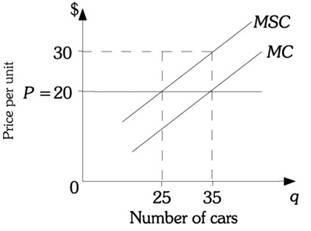All of the following are true for first-degree price discrimination except which one?
A) Consumers pay less for the first units that they purchase.
B) In reality, it is impossible to practice.
C) Each consumer pays the maximum price they are willing to pay for every unit purchased.
D) Consumers receive no consumer surplus.
A) Consumers pay less for the first units that they purchase.
You might also like to view...
If real GDP for Mexico was 19.8 trillion pesos at the end of 1999 and 21.3 trillion pesos at the end of 2000 . then Mexico's economy grew at an annual rate of _____
a. -0.015% b. 4.4 % c. 4.2% d. 7.57% e. 3.8%
A result of an exchange rate depreciation, would occur as the spending patterns change in response to a change in the exchange rate.
a. expenditure switching from domestic to foreign products b. expenditure switching from foreign to domestic products c. expenditure switching from rural to urban producers d. terms-of-trade deterioration
Which would most likely increase aggregate supply?
A. A decrease in the prices of resources. B. A decrease in net exports. C. An increase in the degree of excess capacity. D. A decrease in subsidies for businesses.
Refer to the information provided in Figure 16.2 below to answer the question(s) that follow. Figure 16.2Refer to Figure 16.2. The unregulated (market) amount of cars is
Figure 16.2Refer to Figure 16.2. The unregulated (market) amount of cars is
A. 25. B. 35. C. zero because any production results in an external cost. D. indeterminate from the information given.